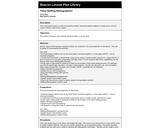
In this lesson, students use source cards to create a works cited list for a report.
- Subject:
- English Language Arts
- Material Type:
- Lesson Plan
- Provider:
- Beacon Learning Center
- Author:
- Beacon Learning Center
- Date Added:
- 04/23/2019

In this lesson, students use source cards to create a works cited list for a report.
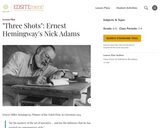
In this lesson, students study issues related to independence and notions of manliness in Ernest Hemingway’s “Three Shots” as they conduct in-depth literary character analysis, consider the significance of environment to growing up and investigate Hemingway’s Nobel Prize-winning, unique prose style. In addition, they will have the opportunity to write and revise a short story based on their own childhood experiences and together create a short story collection.
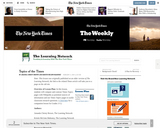
Students will compare and contrast Times Topics pages with Wikipedia as potential sources of information and use Times Topics pages to tackle classroom research questions.

How have agricultural challenges in the past been solved through the use of technology? What kinds of challenges do farmers face today? What tools do they use to help them fix the problems? Support your STEM and Social Studies curriculum with this video that profiles a California pistachio farmer who developed an iPad app to improve irrigation. Then, use the accompanying lesson plan to have students research historical and contemporary agricultural innovations.

A handout/tutorial on correct citations. Included in this resource are guidlines for APA, MLA, and Chicago style plus a citation building resource.

This handout will discuss strategies to evaluate secondary printed sources—books, journal articles, magazines, etc.—based on three criteria: objectivity, authority, and applicability to a particular assignment.

A video resource on how to correctly cite information in writing.

A handout/tutorial on plagiarism and how to avoid it in writing.

A video resource on why we cite information in writing.

Students will choose a topic to research that relates to their career path and write paper on that career in Microsoft Word using MLA formatting for the report.
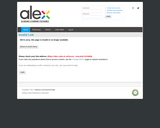
This unit will serve as an exploration of the creation myth across cultures, an introduction to the major Greek gods and goddesses, and an opportunity to link mythology to today's world. Students will research and create a newsletter on a creation myth and the culture from which it came. They will also plan and present a slideshow presentation about a major god or goddess of ancient Greece, including allusions to him/her in today's world.
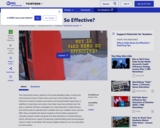
This interactive lesson, based on the series Breaking Views, frames the controversial issues of fake news and trust in the media with the historical context of yellow journalism and sensationalist reporting. In addition to learning more about how fake news has evolved over the years, students will learn strategies for improving their media literacy and will be able to identify both credible and non-credible news sources. After they complete the lesson students will be better prepared to critically analyze media using the Five Key Questions of media literacy, which will become a point of enduring understanding that young people need in order to be better 21st century digital citizens in an era saturated by information.
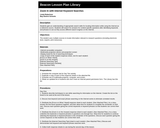
In this lesson, students gain an understanding of appropriate search skills for locating information while using the Internet as a reference source. Students will search for answers for content-specific questions after identifying keywords and phrases to use as they access different search engines on the Internet.
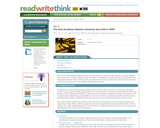
Students make lists of their favorite and least favorite movies and brainstorm qualities that make a film good or bad. Next, students write a movie review for a film they have seen.